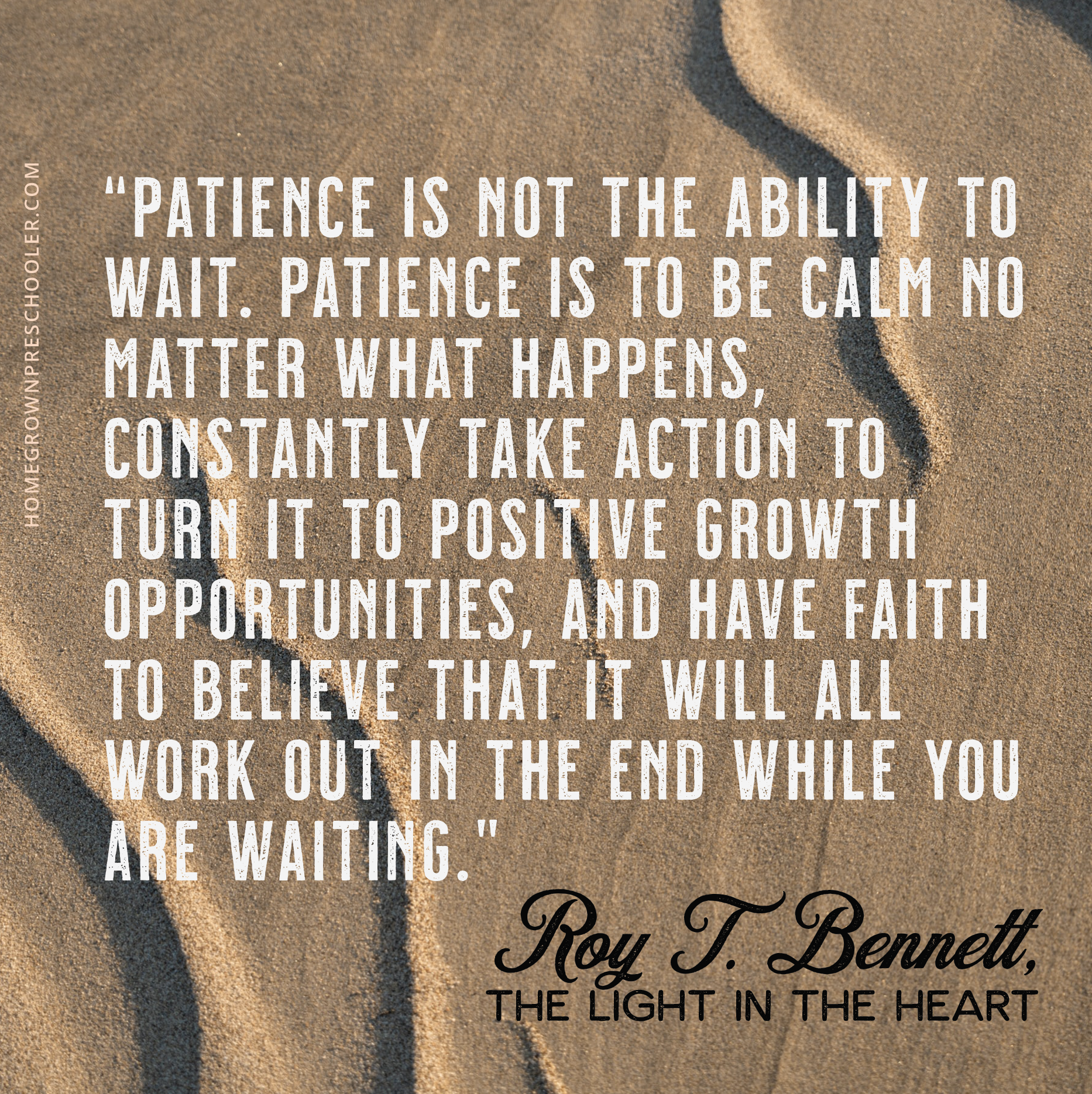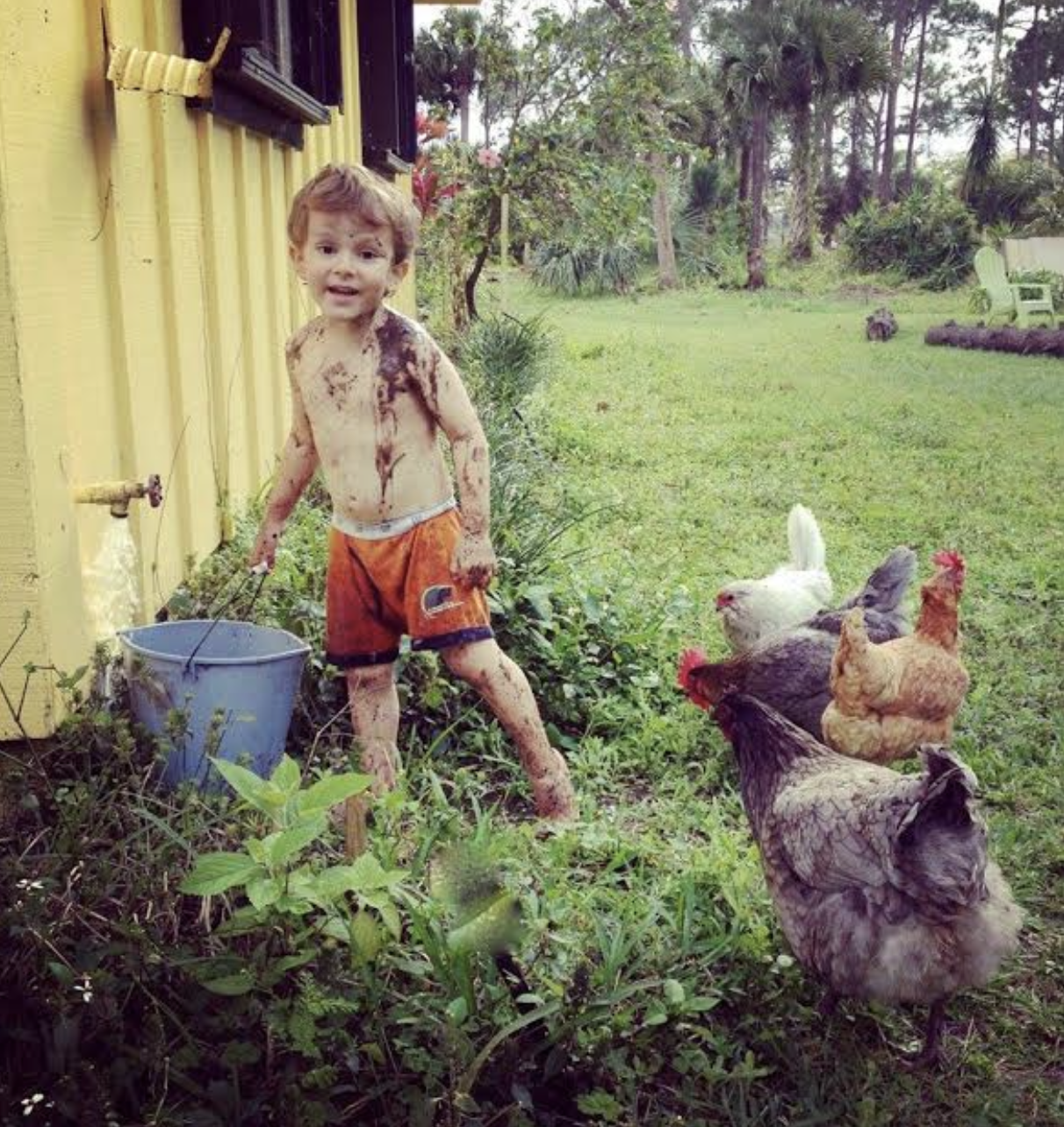This month in our curriculum, A Year of Playing Skillfully, the character trait we are focusing on in ourselves and our children is patience.
Today we are talking about how we can encourage patience in our children. Anyone who has ever carried a tantruming child out of a public place knows this is the holy grail of parenting! How can we teach our children to wait quietly and peacefully for their dinner, or their turn with a toy? How can we minimize the squabbles that come from impatience and frustration with others?
Check Yourself first!
To read about how to develop patience in yourself visit our blog post HERE.
Observe and target potential triggers.
All children are different and get frustrated over different things. Observe each of your children and make notes on the things that seem to cause them the most impatience. A list of potential triggers are:
Turn taking
Losing at games
Hunger
Perfectionism
Frustration with building new skills
Keeping up with siblings
Others not keeping their word
Validate the feeling, but not the behavior.
Usually when a child becomes impatient, their feelings are valid and logical. Oftentimes they lack the maturity to handle those emotions and they act out in ways that can be problematic. When your child acts out, try to help them identify their emotion and verbalize it for them. Say something like “I can see that you are very frustrated that your brother is not giving you a turn with that truck. That must be really hard.” Once we have addressed the big emotion happening, we can help them problem solve and redirect their energies.
Problem solve out loud.
When you find yourself in a situation where you are feeling impatient, use the opportunity to verbally model the thought process you would like to show your children. For example, say something like “This traffic is so hard to sit in. I’m feeling very impatient because I want to get home! Let’s make it more fun by playing our favorite songs. Everyone choose one!” or “I am feeling very impatient because I am so hungry! My stomach is growling and making me grouchy! But I can see that everyone in the restaurant is working so hard to make our food, so I am going to think about how yummy it is going to be when it gets here, and drink a big glass of water until it does!”
Use Humor whenever possible.
Humor and silliness can diffuse so many big emotions. Playfulness is the best way to handle so many things with children, and impatience is no different. It is so tempting to be hard on them when they are impatient…I often wonder if this is because when we see our children showing our own character defects, we become unconsciously defensive, and go after them with extra energy. Dial it back and approach them with a smile and gentle playfulness. Use games like Mother, May I, Freeze Dance, and Duck, Duck, Goose to build listening and patience skills.
Be Honest.
How many times have you said “In a minute.” when your child is asking for something? How many times does one minute turn into fifteen minutes? Our kids are not dumb, and even if they cannot tell time, they have a sense of time. You can help by being honest about how long things will take and giving them concrete objectives such as “When you see mom turn on the flame under the soup, she will be ready to play cards with you, so watch for the flame!” Using visual timers such as hour glasses and kitchen timers is also helpful with small children. Make sure to keep your word when you tell them “in a minute!”
Praise it when you see it!
This month, when you observe your children practicing patience, call it out and reward it!
“Hey, nice waiting!
“I know you are super hungry and you are being so patient!”
“I noticed you were being so patient when your brother wanted to play with your new Lego, so I am making a special dessert tonight!”
“Mom took so much longer than she wanted to finish her work, and you played quietly, so she will read you an extra book before bed.”
Teaching our children to be patient with themselves and others will pay off mightily over the course of their lives, and will make a difference in generations to come! It is worth the work of being intentional in building patience in ourselves and our kids!















